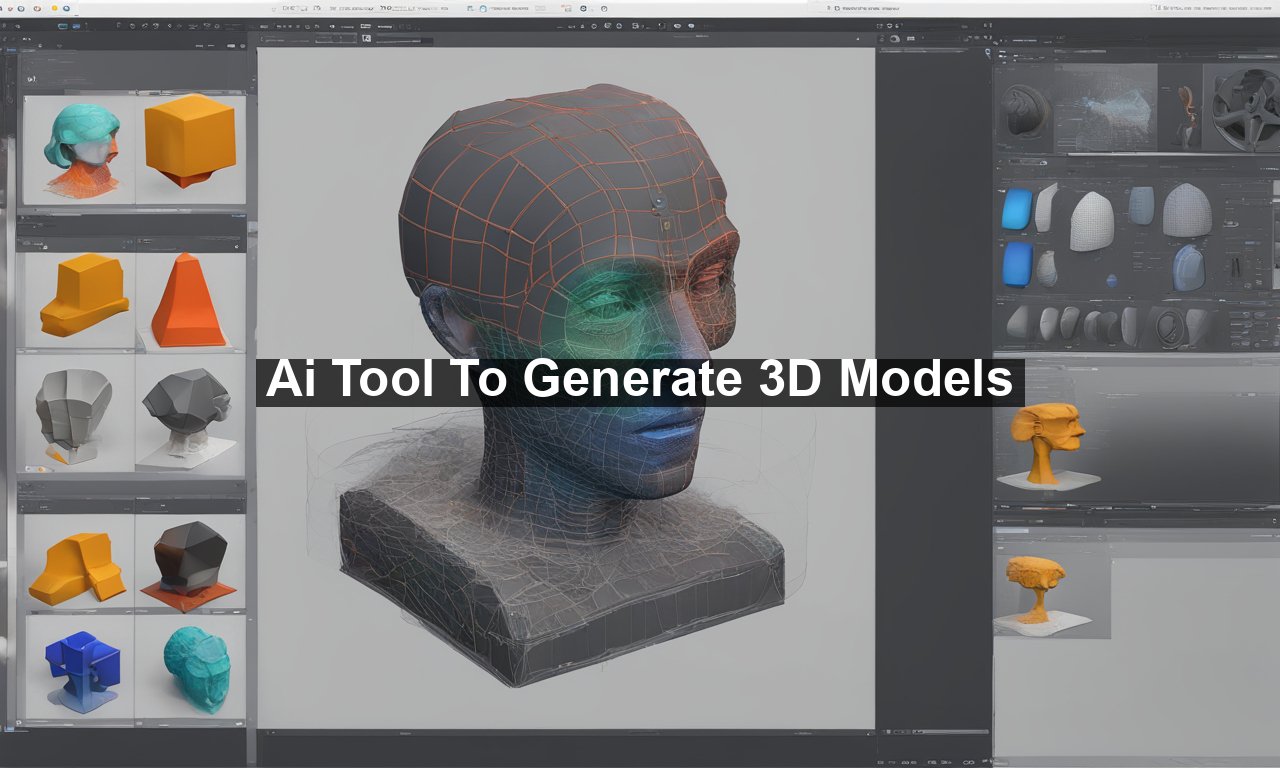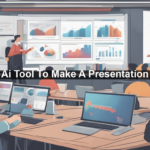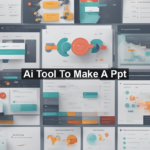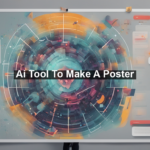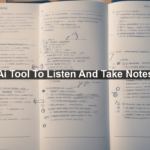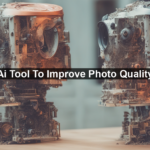Imagine a world where creating 3D models is as easy as typing a few commands into an AI tool. That world is already here, and it’s revolutionizing industries like gaming, architecture, and product design. In this blog post, we’ll dive into the fascinating world of AI tools that generate 3D models, breaking down how they work and how they could change the future of digital creation.
## How AI Tools Generate 3D Models
AI tools that generate 3D models are often powered by advanced algorithms and deep learning techniques. These AI models are trained on massive datasets of existing 3D models to understand the complexities of shapes, forms, and structures.
### Training Data and Machine Learning
Most AI tools begin with a comprehensive dataset of 3D models. These datasets serve as the foundation for teaching the AI how to recognize various elements and recreate them in a virtual environment. Deep learning algorithms analyze and learn from these datasets, allowing the AI to make educated guesses on how to generate new models.
### Neural Networks and GANs
Neural networks, particularly Generative Adversarial Networks (GANs), play a crucial role in generating 3D models. GANs consist of two neural networks: a generator and a discriminator. The generator creates new content, while the discriminator evaluates it. Through continuous feedback loops, the AI learns to create 3D models that look increasingly realistic.
## Advantages of Using AI for 3D Modeling
The benefits of AI-generated 3D models are numerous, making them an attractive option for professionals across various fields.
### Speed and Efficiency
Gone are the days when creating a 3D model required hours of meticulous work. AI tools can dramatically reduce the time needed for modeling by generating accurate shapes and structures within minutes.
### Cost-Effectiveness
Hiring specialized 3D artists can be costly. AI tools offer a more budget-friendly alternative without compromising on quality, making high-end 3D modeling accessible to smaller businesses and independent creators.
### Consistency and Precision
AI tools can produce highly consistent and precise models, minimizing human error. This level of accuracy is particularly beneficial in fields where exactitude is critical, such as in medical imaging or engineering.
### Creativity and Innovation
AI can often think “out of the box” and generate creative solutions that humans might not have considered. By experimenting with various parameters, users can explore a vast array of unique designs.
## Popular AI Tools for 3D Modeling
Several AI-powered tools have gained traction in the industry, bringing their unique features and strengths to the table.
### NVIDIA GauGAN
One of the most popular AI tools for creating 3D models is NVIDIA GauGAN. This tool transforms simple sketches into highly detailed 3D models, making it incredibly intuitive for users who may not have prior experience in 3D modeling.
### Autodesk Revit
Autodesk Revit is another powerful tool that utilizes AI for 3D modeling, particularly in architecture and construction. It offers robust features for building complex structures and even supports collaborative projects.
### Unity ML-Agents
For game developers, Unity ML-Agents offers an AI toolkit for creating game environments. It integrates seamlessly with Unity’s ecosystem, making it a go-to for developing AI-driven 3D models in gaming.
## Applications Across Various Industries
The versatility of AI-generated 3D models extends across multiple industries, each benefiting uniquely from this technology.
### Gaming
In the gaming industry, AI-generated 3D models enable developers to create intricate game worlds quickly. This frees up time for focusing on storytelling and gameplay mechanics. AI can also help generate random terrains, characters, and objects, making each gaming experience unique.
### Architecture
Architects are leveraging AI tools to create complex building designs that traditional methods might miss. This allows for more innovative structures, optimized for both functionality and aesthetic appeal.
### Healthcare
Medical professionals can use AI-generated 3D models for simulations, surgical planning, and educational purposes. Accurate 3D models of organs, bones, and tissues offer invaluable insights into human anatomy and disease treatment.
### Manufacturing and Product Design
From prototyping to final product design, manufacturers benefit from the precision and creativity offered by AI tools. They can rapidly iterate on designs, identify potential flaws, and bring products to market more quickly.
## The Future of 3D Modeling with AI
As AI technologies continue to advance, we can expect even more significant improvements in 3D modeling capabilities. Upcoming tools may offer real-time updates, integrate seamlessly with other software, and provide even higher levels of detail and accuracy.
### Ethical Considerations
While the benefits are numerous, it’s essential to consider the ethical implications of AI-generated models. Issues like intellectual property rights, data privacy, and the potential for misuse must be addressed to ensure responsible use of this technology.
### Integration with Augmented and Virtual Reality
The future may also see a more integrated approach, where AI-generated 3D models seamlessly blend with augmented reality (AR) and virtual reality (VR) environments. This would open up new avenues for interactive and immersive experiences.
## Conclusion
AI tools for generating 3D models are no longer a futuristic concept; they’re a present-day reality transforming multiple industries. From gaming and architecture to healthcare and manufacturing, the applications are vast and varied. As these technologies continue to evolve, their potential for innovation and creativity will only grow, paving the way for a future where digital and physical worlds blend seamlessly.
For more detailed insights into how AI is transforming 3D modeling, check out these resources on DeepMind and OpenAI.
